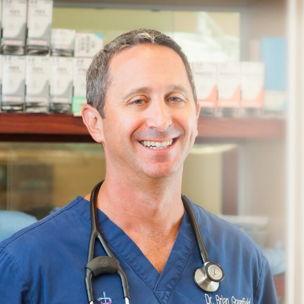Standards & Screening
Standards & Screening
We’re committed to the health and well-being of dogs — and to your peace of mind.
We know that a dog is much more than a dog — they’re a member of the family and a best friend for life. When the source of your new best friend has such a big impact on their health, behavior, and well-being, finding the right one should not be left to chance.
That’s why we’re making it easy to connect with responsible, good breeders who have your and your new dog’s best interests at heart, so your pup has the best chance at a healthy and happy life.
What are our Community Standards?
Good Dog is on a mission to connect good with good and improve canine health at both an individual dog and a population level. In that pursuit, we have sought out and worked with some of the top academics and practitioners in the field to develop community standards, which are grounded in evidence-based research and backed by science. While there is no “one size fits all” for what makes a breeding program responsible, we are able to use our community standards to evaluate programs consistently. Every member of our community must agree to follow our community standards that prioritize responsible breeding practices before joining Good Dog. Here’s how we do it.
How do we evaluate breeding programs?
Our screening department comprehensively considers many aspects of a breeding program, focusing on five key areas:
- Breeding practices
- Physical health of the breeding dogs and puppies
- Mental health of the breeding dogs and puppies
- Environment
- Buyer education and policies
Each key area is assessed individually based on the practices a breeder reports to us and an assessment is also made on the program as a whole.
Breeders apply to Good Dog through an online questionnaire. The application is then reviewed by our screening team to ensure the breeding practices they are reporting are in compliance with our community standards. Our screening team may also conduct an online audit and fraud detection check, and will reach out to the breeder if further information or clarification is needed. Breeding programs may take varied and unique approaches to operating so additional information or confirmation may be requested at Good Dog's discretion to better understand their practices.
What do we look for when screening breeders?
Breeding Practices
Our standards reflect the complexity of responsible breeding decisions. Beyond aiming to pair physically healthy dogs, breeding programs may consider multiple factors including:
- Heritable health conditions that affect their breed
- Individual dogs' health testing results
- Parent temperaments and overall health history
- Pedigree information
- Structural considerations
We recognize that breeding expertise often develops over time. Many experienced breeders mentor newer ones, sharing their knowledge and insights about producing physically and behaviorally sound puppies. Our community includes both established breeders with years of experience and newer breeders committed to learning best practices.
Our standards emphasize that breeding decisions should prioritize dog health and well-being. We ask breeders to describe how they balance these considerations in their breeding programs.
Physical health of the dogs
Our standards emphasize the importance of physical health for both breeding dogs and puppies. We ask breeders to describe their health care practices, as healthy breeding dogs are more likely to produce healthy puppies.
There are breed-specific health tests that responsible breeders may perform on their breeding dogs to screen for diseases and conditions of concern for the breed (e.g., hip and elbow dysplasia, heart conditions, and eye diseases) in order to decrease the likelihood of producing puppies with heritable conditions. For some breeds, there may be a multitude of tests available.
To help distinguish between breeding programs, we identify breeding programs who self-report to performing a different number of the recommended tests for their breed. All breeders are expected to report to meeting our entry-level testing requirements for their breed. Programs that report performing additional screening tests are denoted as having “Great” or “Excellent” health testing practices.
We award health testing badges at the individual breeding dog level (i.e., sires and dams) based on breeders’ reported health testing practices. As part of our dedication to building a transparent and honest community of Good Breeders committed to the health and well-being of their dogs, breeders can provide links on their Good Dog profiles to the health testing information for each of their dogs. Breeders will receive a health testing badge for each sire and dam when they provide verifiable health testing information for those individual breeding dogs.
While health testing is a critical and important aspect of each breeding program, it is only one of many factors that breeders report to us during our screening process. Breeders may also consider other aspects of their dogs’ health that isn’t currently covered by health screening, such as allergies, cancer, GI issues, etc. We ask breeders to confirm their breeding dogs and puppies receive the regular and specialized veterinary care and appropriate nutrition. We also ask breeders to confirm their dogs are bred at an appropriate age (not too young or too old) and within a recommended breeding frequency. And we ask breeders to share their puppy care practices, including their protocols for vaccinations and deworming.
We’ve worked closely with our advisors, which include the nation’s leading experts in canine reproduction, breeding management, and pediatric care, to develop community standards regarding canine reproduction and physical health. Along with our advisors, we are always reviewing the latest research developments and updates in canine health and veterinary care and gathering information from consultations with veterinary and scientific experts, breed clubs, and the relevant scientific literature. Accordingly, we continue to develop new policies and we note that our community standards, including our policies with respect to the physical health of dogs, are subject to continual revisions as new research becomes available. We are fortunate to partner with experts, like Dr. Brian Greenfield, a national leader in canine reproduction practicing at one of the top veterinary clinics in America, as we continue to develop and improve our standards.
We’ve worked closely with our advisor, Dr. Brian Greenfield, DVM, one of the nation’s leading experts in canine reproduction, breeding management, and pediatric care, to develop community standards regarding canine reproduction and physical health. Dr. Greenfield has seen more reproductive cases than almost anyone in the country and works alongside Dr. Robert Hutchison at one of the top vet clinics in America.
Mental health of the dogs
Our community standards ask breeders to describe how they meet their breeding dogs' emotional and cognitive needs through appropriate stimulation, activity, and social interaction. We ask them to apply similar practices with their puppies, with the goal of supporting behavioral development.
Our standards address early socialization and puppy development practices. We ask breeders to describe their experience with training and behavior, and how they provide safe and stimulating early life experiences for their puppies. This includes reporting their methods for:
- Exposing puppies to different sounds and sensations
- Introducing them to people of various appearances and ages
- Appropriate interaction with other animals
- Basic training approaches, such as positive reinforcement methods
We ask breeders to confirm they follow the standard practice of keeping puppies with their mother and littermates until they're ready for transition to new homes, typically no earlier than eight weeks of age.
Environment
Our standards address the importance of providing clean, comfortable, safe, and enriching environments where breeding dogs and puppies can thrive.
Environment can play a critical role in the physical, mental, and emotional health of dogs and puppies. Some of the questions we may ask breeders include how they provide:
- Opportunities for appropriate physical activity (such as retrieving or swimming)
- Mental stimulation through toys and play
- Comfortable resting areas with weather protection
- Regular cleaning and maintenance of housing areas
These environmental conditions aim to support the overall well-being of dogs and puppies.
Buyer Education and Policies
Our standards also address how breeders work with potential puppy buyers. Some of the questions we ask breeders to describe could include:
- Their process for helping buyers make informed decisions
- How they evaluate potential homes for their puppies
- Their approach to transparency about their breeding practices
- What resources and information they provide to support new owners
We also ask about their long-term commitment to their dogs. Our standards may address:
- The ongoing support offered to puppy buyers
- Their policies regarding dogs that need to be rehomed
- Their approaches to preventing their dogs from entering the shelter system
Key elements we look for include education of new owners, screening processes for potential buyers, and clear policies about supporting their dogs throughout their lives.
We developed our community standards regarding buyer education and policies by learning from our partner, Dr. Gayle Watkins, PhD, and her work with Avidog International, the world’s leading educational institution on responsible dog breeding and dog ownership. Dr. Watkins has also bred and/or shown over 150 champions and is one of the only breeders to have been named “Breeder of the Year” by the American Kennel Club for multiple years.
Read more about what it means to be a Good Breeder.
Good Dog's Policies and Breeder Code of Ethics
Once approved as members of our community, we ask that our Good Breeders adhere to our policies and our Breeder Code of Ethics. These guidelines are in place to ensure that breeders share our commitment to the health and well-being of dogs, as well as transparency and good communication with puppy buyers.
From Good to Great — why our community standards are critical to the success of our mission
Our mission is to promote responsible breeders while also working to improve the standards in the dog world overall, as a community. We aim to help buyers find dogs in a responsible way and avoid turning to bad sources out of desperation or a lack of education. In order to make a positive change and succeed in improving the standards overall, we need to work together as a community to strive towards best practices.
Our approach is to keep perfect from being the enemy of the good by establishing community standards that allow us to work with breeders whose programs range from reporting to meet our entry-level community standards to being the best of the best. This allows us to reach breeders who are eager to learn and improve and be able to provide them resources in order to help them do so, while simultaneously recognizing the breeders whose programs have already reached a high level of achievement. The different levels of recognition for health testing practices set forth in our Good Dog Guide to Health Testing that range from Good to Great to Excellent, provide a breed-specific roadmap for breeders to refine their practices and in doing so, improve the health of millions of dogs for generations to come.
We believe it is vital to set forth not just what breeders shouldn’t be doing, but what they should be doing and how they can channel their energy and investment into improving the lives of their breeding dogs and puppies. Through education, access to resources, help finding specialists, and discounts on health testing, we’re committed to helping breeders in our community be the best breeders they can be, because this is how we can make a real, impactful difference. Avidog University, formerly the world's leading educational institution for responsible dog breeders, is now part of Good Dog as we continue our mission to improve current practices.
By bringing together an inclusive group of leading experts from across a variety of fields and uniting as a community committed to being a force for good, we can harness the collective passion that has so far been scattered in many directions and turn it into a practical shared framework centered on responsible practices and healthier dogs.
Support from leading dog welfare and veterinary experts
Our Standards and Screening processes were developed thanks to the work and consultation of Dr. Brian Greenfield, DVM, one of the leading veterinary and academic experts in both animal welfare and dog breeding. We believe in conducting a science-based evaluation of breeding practices, and we’re proud to work with Dr. Greenfield to achieve that.

Dr. Brian Greenfield, DVM
Dr. Greenfield is one of the nation’s leading experts in canine reproduction, breeding management, and pediatric care. He has seen more reproductive cases than almost anyone in the country and is a sought-after expert in the field. Dr. Greenfield was instrumental in developing Good Dog’s standards and screening procedures, with a focus on ethical reproductive practices, veterinary care, health testing, and breeder policies.
Tell us what you think. We’re committed to listening and learning.
Our community is founded on a commitment to listen, learn, and as with so many issues in the dog world, sometimes people have very different opinions and it can take time for us to determine what makes sense for our community. Our community standards are also constantly evolving as cutting-age canine research continues to provide powerful new insights into how to have healthier dogs. While we continue to evolve our standards, we encourage you to keep sharing your feedback with us and asking questions because that’s how we’ll get this right, by working together. And we’re committed to getting this right. Please feel free to share any feedback to feedback@gooddog.com.
By working together as a community committed to transparency, education, and responsible practices, we can make a difference in the dog world – because we’re stronger together. Together, we can give our dogs the world they deserve.





















































































































































































.jpg?type=dog&crop=48x48)












































































































































































-.jpg?type=dog&crop=48x48)
















